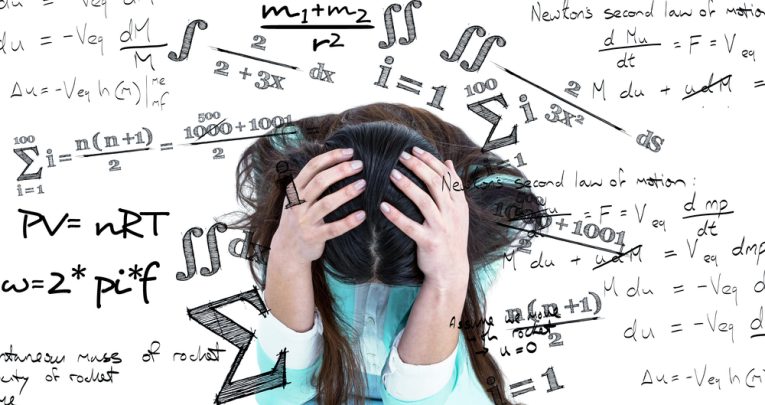How Maths Anxiety Affects High Achievers, Especially Girls

Nervous teachers + teaching children there’s only one right answer = maths anxiety
- by Brent Hughes

Many students, especially the high achievers, and predominantly girls, experience maths anxiety at a young age; and it’s a problem that can follow them throughout their lives. A study published in ‘Proceedings of the National Academy of Sciences’ carried out by academics at the University of Chicago revealed that female teachers with maths anxiety are fuelling the stereotype that boys are better than girls at maths.
In primary schools, where teachers not always subject specialists, it is easy for their lack of confidence in basic mathematical skills to be passed on to girls. The study showed that girls’ understanding of maths was ‘significantly worse’ after a year of being taught by a ‘maths-anxious’ teacher. And with the vast majority of primary school teachers being female, this is an important consideration.
Another study carried out by Sian Beilock, professor of psychology at the University of Chicago, showed that students start to experience worry and fear about doing maths as early as Key Stage 1.
Although these conclusions are nothing new, the study raises an important question about delivering the new primary maths curriculum and working with parents to help each child develop a love of maths.
Another interesting point highlighted by the research was that maths anxiety affected the highest-achieving students, rather than the lower performers.
The reason, as Beilock explains, is that a child’s working memory is ‘especially important when they have to do a maths problem and juggle numbers in their head. Working memory is one of the major building blocks of IQ’.
The findings published in Math Anxiety, Working Memory and Math Achievement in Early Elementary School shows that lower-performing students were not impacted by anxiety, because of the simple techniques they have learned to use over the years, such as counting on their fingers. Therefore, their performance isn’t so markedly affected when they feel under pressure.
I agree with Beilock in her view that maths anxiety has a variety of sources; with teachers’ and parents’ concerns about their own maths ability being key. I also believe it is about the way maths used to be taught; testing children with quick-fire questions and instilling the idea that there is only one right answer.
This is something addressed by the new primary maths curriculum; students should be encouraged to try out ideas and theories about which mathematical skills to use to solve a problem. If it doesn’t work, they simply move on to the next idea. There is no such thing as failure!
By teaching maths in this way, pupils’ early experiences of maths becomes far more positive.
I also believe that this addresses the importance of primary schools working with parents to educate them about instilling a positive notion of maths in their children.
Teachers not only need to re-address the way they teach maths at the primary level to comply with the new curriculum; they must also re-examine traditional teaching methods to avoid this increasing notion of maths anxiety.
Delivering maths through an edtech platform that uses images, encourages pupils to make informed ‘guesses’ and makes it fun when the answer isn’t exactly right, can instil a joy of mathematics that could remain with them throughout the rest of their lives.
Brent Hughes is a teacher educator at Matific.











